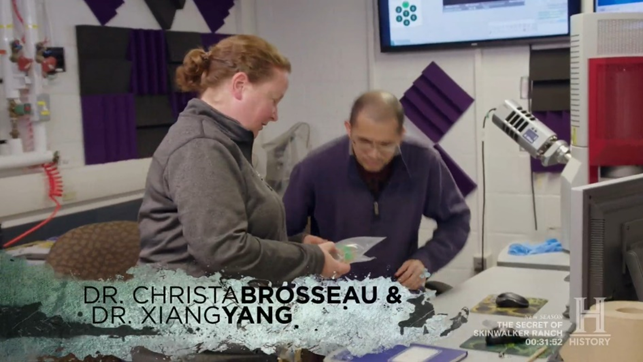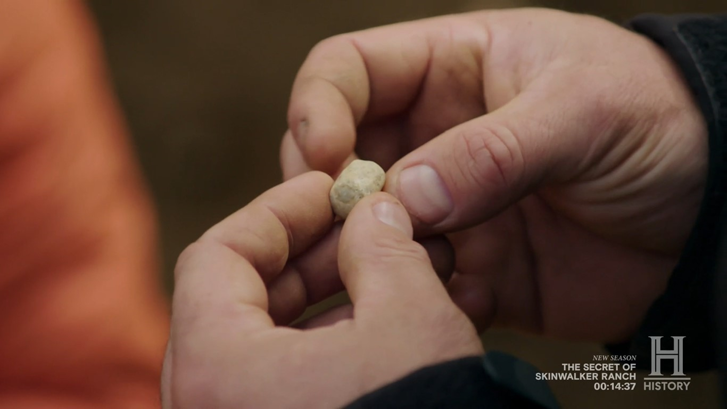SEASON 11, EPISODE 24, “HAIRY SITUATION” ARTIFACT AND FEATURE ANALYSIS
- Daniel Spino

- Apr 24, 2024
- 5 min read
The Curse of Oak Island – The History Channel
In this week’s episode, “Hairy Situation”, we are first taken to Roskilde, Denmark, where the Oak Island team continued their European trip. Rick Lagina stated that one of the goals of the trip was to try to make a connection between the Vikings and Templar’s and Oak Island. The team visits The Viking Ship Museum where they met with curator Morten Ravn to look at some of the ships that the Vikings used in their exploration and voyages. Dr. Ravn explained that the Viking ships transitioned between rowing ships to sailing ships in about 750AD which would have made transatlantic voyages more feasible. The team is taken to a cargo ship at the dock outside the museum and a piece of the railing of this replica ship, circa 1060AD, is noticed by the team. It is compared to a piece of wood found in the Swamp which was carbon dated to 660AD to 770AD. The team believes it may be a piece of a ship and a connection is proposed between it and the piece of wood on this Viking replica ship.
The Curse of Oak Island – The History Channel
We are then taken to the Lab where the Oak Island team met to discuss soil samples that were collected from the Lot 5 excavation sites and the Money Pit. It is stated that a sample of clay taken of the round feature near the shore has already produced a match with the Money Pit. It appears this sample was in a shallow part of the Money Pit. A sample from the rectangular feature appears to match the Money Pit clay as well, but this is maroon till that is 110FT deep. The soil samples taken produce positive matches with the Money Pit. This indicates that something was going on at the Money Pit that involved both of these locations on Lot 5.
The Curse of Oak Island – The History Channel
The team’s trip then takes them to Reykjavik, Iceland where they are visiting the Arni Magnusson Institute. The team met with curator Professor Guðvarður Már Gunnlaugsson who oversees the manuscript collection that was first put together by Arni Magnusson in the 1700’s. Magnusson collected ancient Icelandic manuscripts and it is explained that there were monastic houses on Iceland that created these manuscripts. One of these manuscripts is shown to the team which was written in Latin and Norse. It shows detailed use of Astronomy and Sacred Geometry from the 13th Century. It also shows the use of the star Arcturus in navigation. Arcturus is known for its brightness and was referred to as the Day Star. It should be noted that very ancient cultures before the Norse also used Astronomy in their navigation at seas that included the Phoenicians and others. Also, in this manuscript there are symbols that look very similar to the symbol found on the copper piece that was discovered last season on Oak Island. This suggests that the copper piece may be pf Viking/Norse origin.
The Curse of Oak Island – The History Channel
The scene shifted to the St. Mary’s University Science building where the Oak Island team met with Dr.’s Christa Brosseau and Xiang Yang. It seems to have been quite a while since the team has visited the Dr.’s since they’ve acquired their own testing machines at the Oak Island Lab. What Dr.’s Brosseau and Yang do have is a Scanning Electron Microscope which is needed to analyze the recently found rock from Lot 10 that appears to have a hair embedded in it. The microscope can magnify the contents of the rock to see what else it is composed of. After magnification, it is apparent that there is not only one hair but many hairs in the sample. The Dr.’s agree that it looks like animal hair and not human. This seems to indicate that perhaps an animal like oxen was used to put the boulder into place. Further testing to confirm the type of animal this came from is upcoming.
The Curse of Oak Island – The History Channel
We were then taken back to Iceland where the Oak Island team visited the National Museum of Iceland where they met with Armann Gunmundsson, who is an archeologist of the museum. Gunmundsson shows the team some Roman coins found on the south side of Iceland. He explains that settlers from Scandanavia the late 9th to early 10th Century must have brought the coins with them and this indicates some sort of trade between the Norse and the Mediterranean at some point. These coins at the museum are from the 4th Century AD while the Roman coins found on Oak Island are estimated to be from the 5th Century AD.
The Curse of Oak Island – The History Channel
The scene shifted to the Lot 5 Rectangular feature excavation site, where Archeologists Helen Sheldon and Fiona Steele are joined by Jack Begley as they work continued to work on the depression. While digging, the Archeologists noticed that the ground in the area looked like it had an “iron” caste to it. Fiona Steele then found what appeared to be a piece of heavy lead. The shape was very interesting as Helen Sheldon remarked that she had never seen a piece like this before. The piece appeared to have faceted edges that were carved. It appeared to be a type of trade weight that was used in barter situations. Another suspected trade weight was found previously on the island. This appears to have been a likely activity on Oak Island in the past. Most likely involving beaver and other animal skins that were highly sought after in Europe. It’s also very possible that trade was happening between British and French interests which was generally outlawed and illegal. This would explain the Oak Island location not being recorded and kept secret prior to the 1760’s.
The Curse of Oak Island – The History Channel
Our analysis concludes back in Iceland where the team meets with Historian Roberto Pagani, who is showing them a cave in the southern part of the island. The caves in this area are manmade and it is theorized that Irish monks in the 9th Century may have made them. The particular cave that the team is visiting has what looks like a Christian cross carved in the wall. Members of the team believe it may be a representation of the Lead Cross found on Oak Island. It should be noted that there are many crosses depicted in these surrounding caves and it has not been established that they are Christian crosses and may in fact be pagan. A very similar carving can be found in the Azores, and it is suspected that this carving depicts the Goddess Tanit, which would make it Phoenician/Carthaginian in origin. Evidence indicates that the Vikings/Norse traveled to the Azores, and it is theorized that a trade network involving Scandinavia, The Azores, and North America existed at some point in time. Whether any of that involved Oak Island is theoretically possible. Join us next week for the season finale of Season 11.
Good day from the Compendium!





















